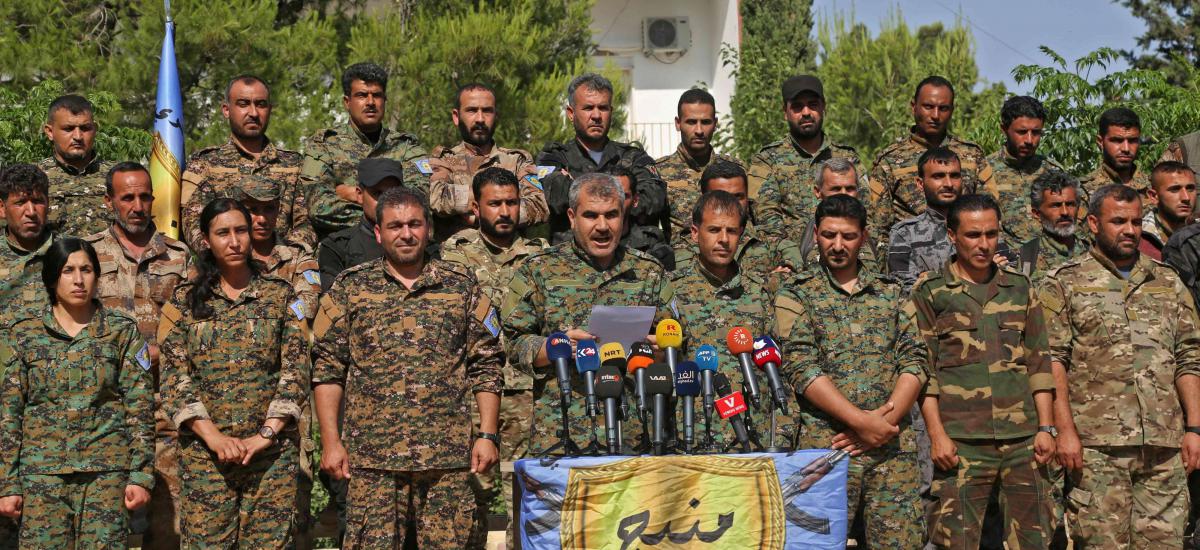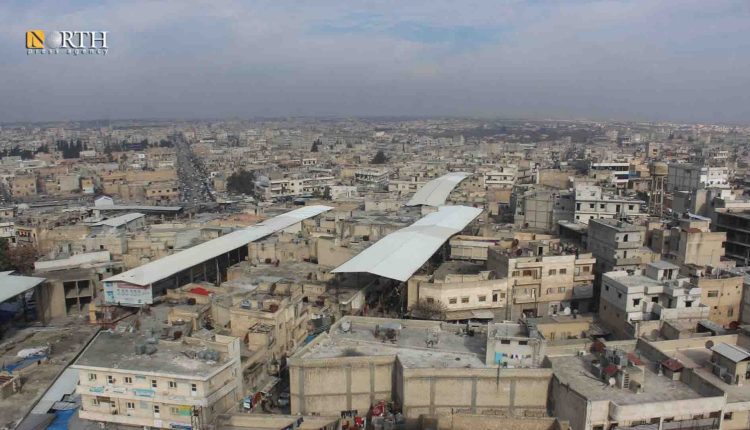QAMISHLI, Syria (North Press) – Since the withdrawal of the US forces in 2018, the city of Manbij has become a main bargaining issue for Turkey, and difficult negotiations have been held in closed rooms between Turkish high-ranking officials and those of the actor states.
The city of Manbij is located in the eastern countryside of Aleppo Governorate in northern Syria. It is 30 km from the Turkish border. It has a population of about 700.000 .
Manbij is of strategic location that can change the balance of power in northern Syria as it is located on the M4 highway, and it is the link between west and east of the Euphrates.
M4 is the highway that links northeast regions of Syria with the northwest, starting from al-Ya’rubiyah (Tel Kocher) border crossing with Iraq and ending in Latakia on Syria’s coast, passing through the towns of Tel Tamr and Ain Issa, Manbij, Aleppo and Idlib.

Opposition, ISIS and SDF
Turkish-backed armed opposition factions, also known as Syrian National Army (SNA) took control of Manbij and its countryside in 2012 following the withdrawal of Syrian government forces.
In 2014, Islamic State Organization (ISIS) took over the city and gets the SNA (Free Syrian Army-FSA at the time) out of it.
During the ISIS control, Manbij became the main corridor through which ISIS transported jihadists, weapon and money from Turkey to its held areas in Syria. It became the land were jihadists moved from and to Syria and Europe, according to reports.
The Syrian Democratic Forces (SDF) supported by the US-led Global Coalition to Defeat ISIS liberated Manbij from ISIS in 2016 following fierce battles.
In 2017, Manbij Military Council was founded, which is consisted of fighters from all the communities of the region such as the Arabs, Kurds, Circassians and Turkmen.
Democratic Civil Administration
Following its liberation from ISIS, the Arabs, Kurds, Circassians and Turkmen, who constitute the fabric of Manbij, established their own administration under the name of Democratic Civil Administration of Manbij and its Countryside to run the affairs of their region. Then, this administration joined the Autonomous Administration of North and East Syria (AANES).
The AANES was first formed in 2014 in the Kurdish-majority regions of Afrin, Kobani and Jazira in northern Syria following the withdrawal of the government forces. Later, it was expanded to Manbij, Tabqa, Raqqa, Hasakah and Deir ez-Zor after the SDF defeated ISIS militarily there.
Under this administration, all communities of Manbij practice their own rituals freely.

Economic prosperity
The city of Manbij is one of the most important industrial centers in northern Syria, as it is a transportation hub and sits on a commercial road linking the Autonomous Administration held areas with those of the Syrian government, in addition to opposition-held areas in northern Syria.
Manbij is connected with the rest of Syria through three main crossings: Awn al-Dadat to the north and Umm Jeloud to the northwest of Manbij which link it with the opposition-held areas, and al-Tayha crossing southwest of Manbij, which links it with the government-held areas.
Since the start of the Syrian war in 2011, a large number of industrialists have fled from the rest of Syria, most notably Aleppo, towards Manbij.
The number of factories licensed by the Economic Committee in Manbij is 488, including 160 food manufacturing facilities, 130 cinder block factories, 150 facilities for the manufacture of hoses, ice blocks, and paint, in addition to two pharmaceutical factories and 11 sifter machines for legumes.
Turkish escalation
The presence of the fighters of the Kurdish People’s Protection Units (YPG) in Manbij, who expelled ISIS from the region alongside the SDF, was Turkey’s pretext to threaten the region and invade it, because it sees the YPG as a branch of the Kurdistan Workers Party (PKK) which is classified as a terrorist organization by Turkey, the US and Europe.
In June 2018, a roadmap agreed on by the US and Turkey to remove the YPG from Manbij and this has been fully implemented. But it seems that the roadmap was of nowhere because in December of the same year, the US Former President, Donald Trump announced the withdrawal of his country’s forces from Manbij, leaving the city a prey to Turkish ambitions. Since then, Turkey has been intensifying its military escalation against the region.
In 2018, Turkish President Recep Tayyip Erdogan threatened to invade the city but the withdrawal of the YPG fighters prevented that. In 2019, Erdogan reiterated his threats of invasion under the pretext that the YPG fighters are still there. In 2020 and 2021, Turkey turned to the SDF accusing it of affiliation with the PKK and demanded to push it away from the city. Now it is 2022, the same threat is being uttered against Manbij and under the same allegations.
For four years, all the above mentioned Turkish threats have been accompanied by frequent shelling and infiltration attempts in the region by the Turkish forces and their affiliated SNA factions.
It is worth mentioning that when ISIS took control of Manbij, Turkey was not afraid of its national security nor threatened the ISIS terrorists of launching any military operations against them.

